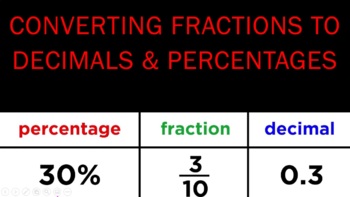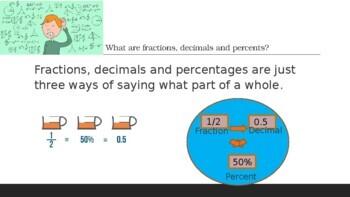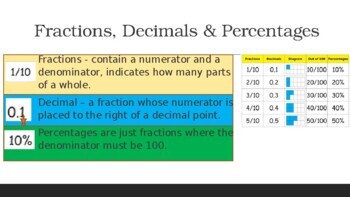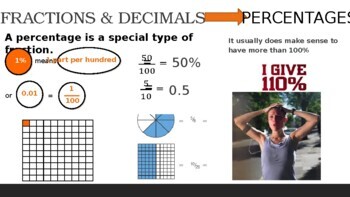Intro to Fractions, Decimals and Percentages for 4th-5th Grade
- PPTX
Also included in
- 5 presentations1) Fractions - Equivalent, Finding Common Denominators, Mixed Numbers, Improper Fractions, Adding, Multiplying & Dividing2) Converting Fractions to Decimals and Percentages3) Geometry - Perimeter, Area & Volume4) Geometry - Intro to the Coordinate Plane, Drawing Shapes with CoPrice $18.95Original Price $30.30Save $11.35
Description
Introduction to decimals and percentages and how to convert back and forth between these quantities, with particular emphasis on understanding what percents actually mean. Annotated slides showing step by step solutions to equations. About 50-60 minutes of material that could be taught in one longer lesson or two shorter lessons. Appropriate for those who have never been exposed to percents or know only a little about them. Includes word problems. Also introduces repeating digit decimals.
I also have the much more in-depth version of this lesson that includes about 5 lessons worth of material (123 slides). It also includes percent of change, percent of a number, ratios and portions.
https://www.teacherspayteachers.com/Product/Fractions-Decimals-Percentages-plus-Ratios-Proportions-5th-6th-5-hours-7522024






